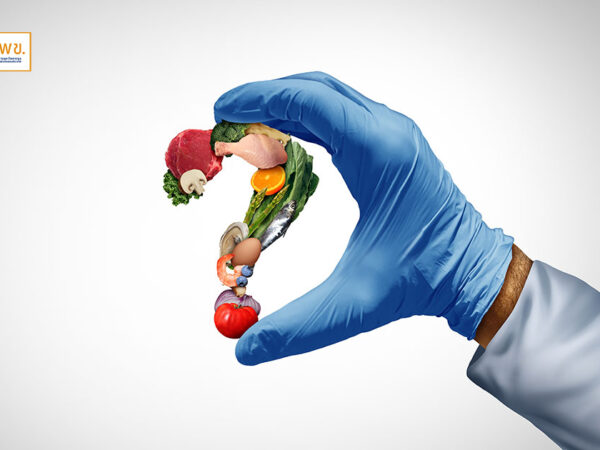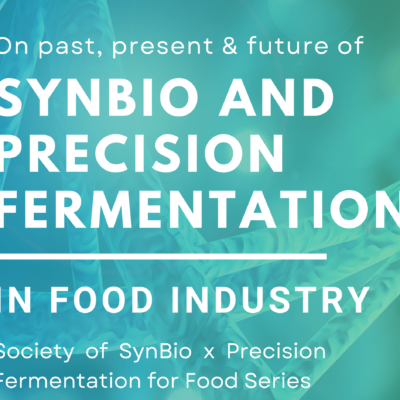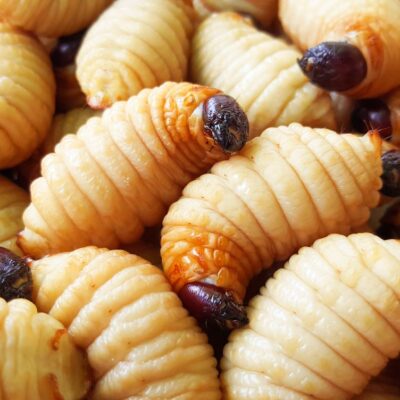PMUC aims to forge cooperation between government agencies and the private sector in jointly
driving research to develop Thailand’s premium pet food industry, hoping to earn the title of being
the world’s No. 1 exporting country.
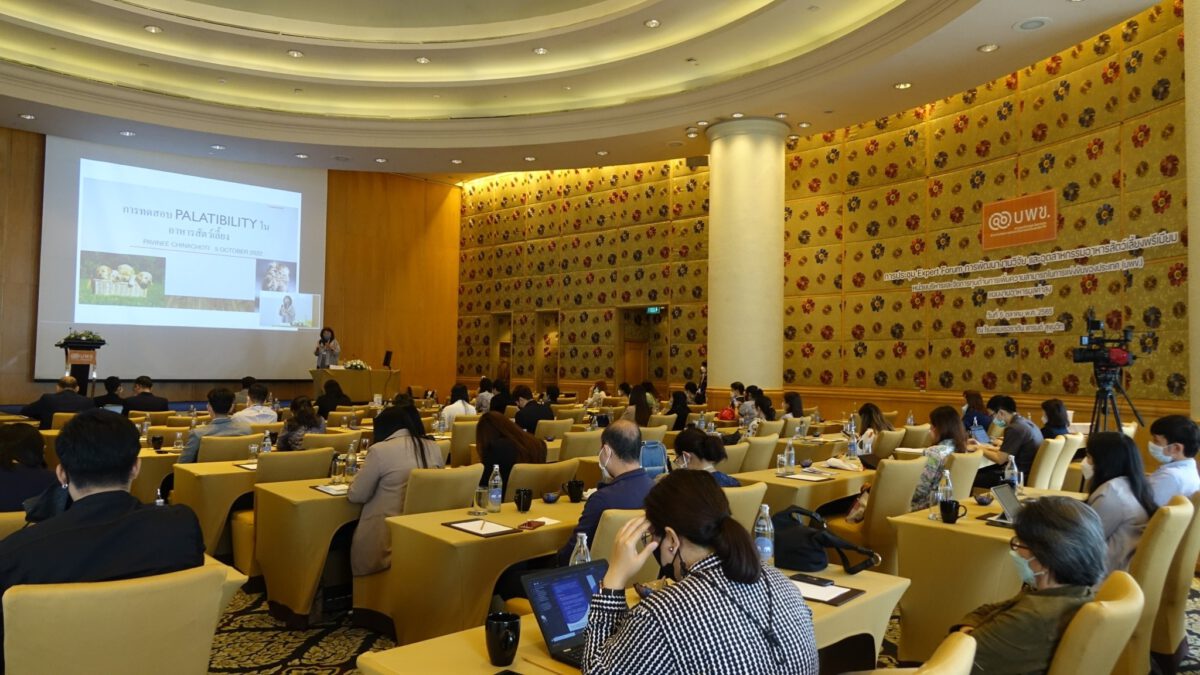
Mrs. Supatra Riwphairoj, director of the Thai Pet Food Trade Association (TPFA), who participated as a lecturer on the trade situation of Thailand’s premium pet food industry, gave details that The Thai animal food industry has been developed, originally based on the tuna industry in Thailand, for more than 50 years, with the current value of tuna imports from abroad at about 1.25 billion US dollars. Value addition has resulted from the development of product innovation and by-products from tuna with total value three times as high, or about 3.5 billion US dollars. The canned tuna export industry is worth about 2.3 billion US dollars, the general pet food industry, worth about 1.8 billion US dollars, and innovative products made of by-products from canned tuna production, such as tuna extract and oil, or the production of fish feed from tuna bone waste from factories, worth about 700 million US dollars. In addition, the development of the animal feed industry at present has expanded the use of raw materials from tuna to chicken and beef, as well as adding other raw materials such as vegetables and fruits obtained from domestic production, and imported from abroad. The development of animal feed also covers various forms of novel packaging, supplementing with vitamins and functional ingredients to produce a wide range of products with high quality to meet the needs of both domestic and international consumers.

Ms. Mongkol Manamalai, the director of the Food Industry Association (PIA), a member of the World Pet Food Association, which has been in operation for 20 years. PIA originated was founded during the time when Thailand had limited direction on animal feed requirements from the Department of Livestock Development. However, there were entrepreneurs who needed to use various standards or requirements to reference for distribution or exporting. As a result, Thai entrepreneurs came together to find a common set of parameters for use in negotiations, including expanding academic cooperation, consolidating research information and knowledge base, or cooperating with research universities, etc., for the benefit and advancement of Thailand’s animal feed production industry to become one of the world’s leaders in the production of animal feed which meets internationally accepted standard.
Ms. Mongkhon gave a lecture on the topic of “Testing for registration and certification of pet food for entrance into the market. ” stating that Thailand has natural resources and human expertise to help advance the Thai animal food industry greatly. In the production of pet food the main success factor is that it must pass two important tests, namely testing for product development, and testing for compliance with product registration laws. Initially, manufacturers need to develop product prototypes and conduct market research to develop the appearance, color, texture that is suitable for the targeted type of animals. Then comes the development of product qualities, referred to as “Product performance development”. At present time, there are no specific agencies specializing in testing animal food for qualities such as shelf-life, palatability, product efficacy, or compliance with international standard protocols. As for testing for compliance with the product registration laws, including testing for chemical properties, such as the amount of fat, fiber, protein, etc. in order to apply for a product registration for commercialization.
The association is very pleased that the PMUC will be the initiator in promoting infrastructure development for the country’s animal feed industry.

Palatability Test in pet food, lecture given by Prof. Phawinee Chinachote, Ph.D., member of High-value Food Subcommittee, PMUC, who also provided details about palatability testing in pet food. This is especially important in product development and formulation of marketing strategy.
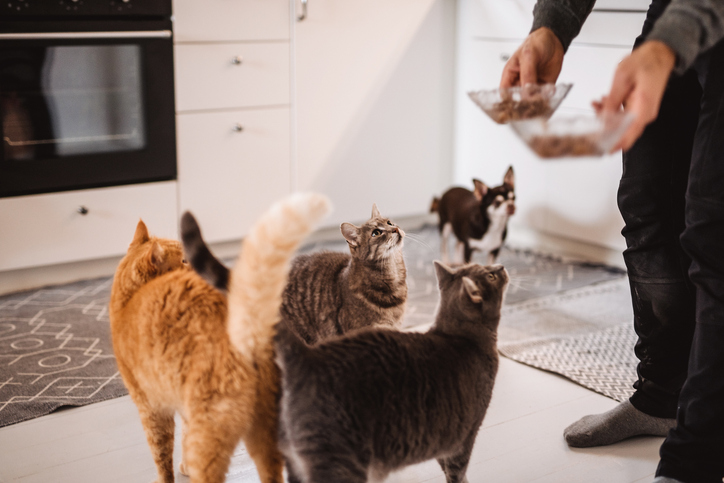
As an essential part in the development of pet food products, producers must pay attention to and understand the behaviors of pets and their owners, because animals (the real consumer) cannot interact or provide verbal feedback. Also important is the emotional bond between the pets and the owners (customer). Therefore, palatability test is very important and is comparable to the development process for baby food.
When comparing the characteristics of dogs and cats, while both are predators, but they have some characteristics that are different. Dogs have the ability to use their fangs to shred meat and have the digestive system to process both meat and plants. Cats on the other hand use their small fangs to tear food and lack the ability to shred meat. Cats have a short digestive tract not suitable for eating carbohydrates and fiber. Cats can taste protein because cats have higher protein requirements than dogs. Dogs, which have had an intimate coexistence with human for a long time, have developed eat behaviors and diets which are similar to those of humans, while cats have a different type of relationship. They are rather self-centered and easily bored. Therefore, the details including the behaviors of the animals that the owners see, whether it is tail wagging, begging, making noise, running to the food bowl when hearing the sound, and imprinting behavior when tasting real food for the first time after weaning from breast milk, will determine product design and marketing strategy formulation.
In addition, feeding times are bonding time between owners and their pets. Thus, producers can create marketing opportunities from palatability test in pet food production to help promote a good relationship between owners and their pets, for example, making snack products using food as a reward for training pets.
The olfactory contact in dogs is a thousand times more sensitive than that of humans. Dogs have more than 220 million olfactory cells, while humans only have 5 million. Dogs and cats can smell pheromones, while people cannot. Dogs can smell diseases in humans such as inflammation, epilepsy or cancer, for example.
In contrast, humans have many times more taste receptors than animals. Humans have about 10,000taste buds, while dogs have about 1,700, and cats only have about 500. Some foods are not consumable by some animals. For example, dogs cannot eat chocolate, and giving onions and garlic to cats can be toxic for them in the long run. With this taste-related informatรon and known dietary restrictions, the palatability test can help producers in developing appropriate food flavors for pets.

Sample palatability test : TWO-BOWL Palatability Test is an experiment on animal feeding to see the average amount of food intake (Intake ratio) to indicate preferences for 2 different types of food.





